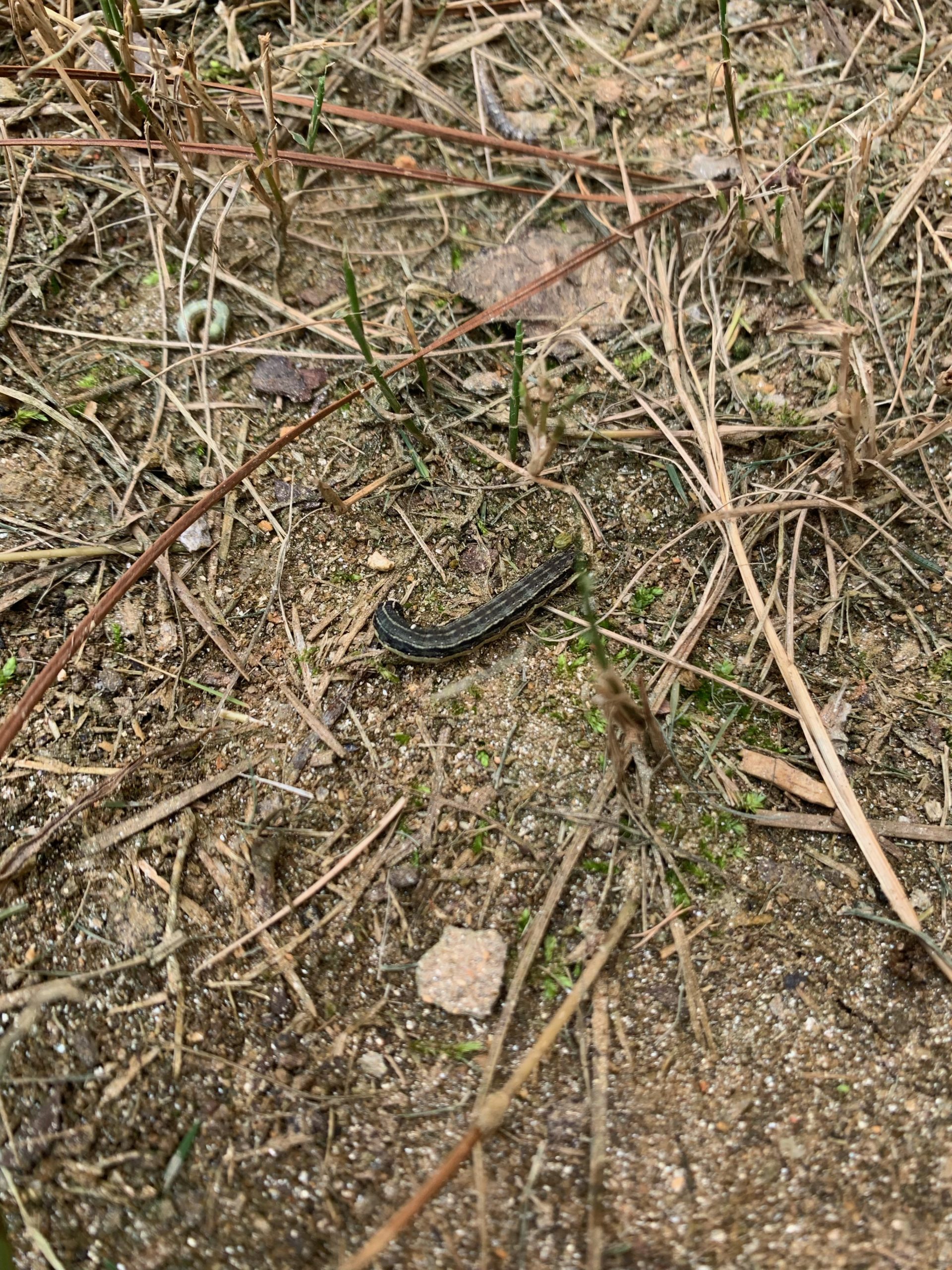Armyworms – often called fall armyworms – are caterpillars (the larval stage) of a small, mundane gray moth. Much like the main character of the childhood book The Very Hungry Caterpillar by Eric Carle, armyworms are indeed very hungry. In the next few paragraphs, we’ll go over how you can control armyworms found in your turf.
Where Armyworms Come From
South of Atlanta, we typically see these pests arrive late summer or early fall as they make their way from areas they survive winter. Varying environmental conditions affect arrival time and population size. At night, females lay their eggs on structures or suitable plants in groupings ranging from dozens to hundreds. Eggs could end up on buildings, playsets, bleachers, vehicles, and even less substantial items like golf flags or planters.
After a few days, they hatch and make their way into surrounding landscapes. Larval stages occur over two to three weeks, while the latest stages are most destructive to your turf. In situations where substantial populations are present, large areas can be defoliated in exceptionally short periods.
How to Identify Armyworms
The most mature stages of armyworms can do significant aesthetic damage to turf and include the identifying features we commonly associate with them. As caterpillars, they generally look as you would expect, ranging in color from browns and grays to yellows and greens. The most significant identifiers are an inverted Y between the eyes and three stripes on the pronotal shield behind the head.
Early morning and late afternoons when temperatures decrease are when armyworms tend to feed. However, voracious populations may be seen at any time. While lights in or around a turf area attract the moths, they are not selective about where they lay eggs. Urban and rural environments are equally susceptible targets.

Ways to Control Armyworms
Due to the nature of how their populations arrive and spread, we can keep a couple of things in mind. If you have armyworms in your turf already, you did nothing wrong. They are a naturally occurring pest that can proliferate exponentially in ideal conditions. Notifying your neighbors or HOA as a courtesy is appropriate, but keep in mind that you did nothing to introduce them.
Based on their relatively short life cycle, if you have new sod that has been down for four or five weeks, the worms likely didn’t come on it. While they can be attracted to new growth generally present during establishment, mature lawns are also susceptible. The damage done is usually aesthetic, as they eat the green tissue off of the plant but do little damage to the stalk. If done at a time of year when the turf is actively growing, recovery can be expected within a timeline dependent on environmental factors and turf health before defoliation.

So, what can be done? Here is a shortlist of steps our team recommends to control armyworms in your turf:
- Keep a lookout, especially in summer or early fall and early morning or evening when temperatures are cooler.
- Identify them by the inverted Y on the back of their head.
- Notify your neighbors or HOA so they can be on the lookout for their own properties.
- Call Nature’s Turf and notify us of the pest’s existence so we can treat it appropriately.








